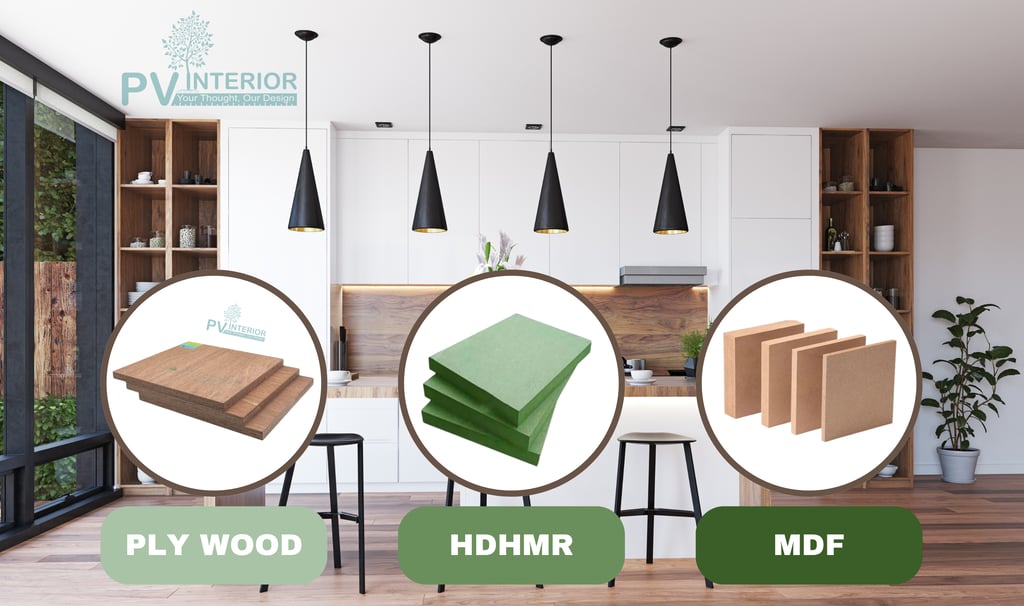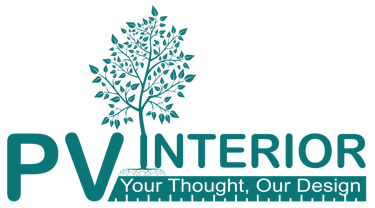Choosing the Right Material for Your Interior
Plywood vs MDF / HDHMR Choosing the Right Material for Your Interiors


Plywood vs MDF-HDHMR Choosing the Right Material for Your Interiors
When it comes to interior design, selecting the right materials is crucial for durability, aesthetics, and functionality. Three of the most popular materials used in furniture and cabinetry are Plywood, MDF (Medium-Density Fiberboard), and HDHMR (High-Density High Moisture Resistant Board). Each has its strengths and weaknesses, and understanding the differences can help you make the best choice for your space.
What is Plywood?
Plywood is a strong and durable engineered wood product made by layering thin sheets of wood veneer together with adhesive. These layers are arranged in a cross-grain pattern, which enhances its strength and resistance to warping.
Advantages of Plywood:
✔️ High strength and durability
✔️ Resistant to moisture and humidity (especially marine plywood)
✔️ Can hold screws and nails firmly
✔️ Aesthetically pleasing wood grain texture
✔️ Available in various grades and thicknesses
Disadvantages of Plywood:
❌ More expensive than MDF
❌ Requires edge banding for a finished look
❌ Difficult to achieve intricate designs due to its layered structure
What is MDF?
MDF (Medium-Density Fiberboard) is an engineered wood product made from fine wood fibers combined with resin and compressed under high pressure. It has a smooth, uniform surface that makes it ideal for painted finishes.
Advantages of MDF
✔️ Smooth and uniform surface, ideal for painting and finishing
✔️ More affordable than plywood
✔️ Allows for intricate carvings and designs
✔️ No risk of splinters or knots
✔️ Available in a variety of thicknesses
Disadvantages of MDF
❌ Less durable compared to plywood
❌ Susceptible to moisture and water damage
❌ Cannot hold screws and nails as firmly as plywood
❌ Heavier than plywood, making installation more challenging
What is HDHMR?
HDHMR (High-Density High Moisture Resistant Board) is an advanced version of MDF, engineered for higher density, strength, and moisture resistance. It is created by compressing wood fibers with a special adhesive under high pressure, making it ideal for both interior and semi-exterior applications.
Advantages of HDHMR:
✔️ Superior moisture and water resistance compared to MDF
✔️ Higher density and durability, making it suitable for heavy-duty applications
✔️ Smooth surface, ideal for laminates and paint finishes
✔️ More resistant to termites and fungal attacks
✔️ Great for kitchen cabinets, bathroom vanities, and outdoor furniture
Disadvantages of HDHMR:
❌ More expensive than regular MDF
❌ Slightly heavier than both MDF and plywood
❌ Can be difficult to cut and shape due to its high density
Which One Should You Choose?
The choice between plywood, MDF, and HDHMR depends on your specific interior design needs:
For kitchen cabinets, bathroom furniture, and areas exposed to moisture, HDHMR is the best option due to its high moisture resistance and durability.
For decorative elements, wall panels, and intricate furniture designs, MDF is a great option due to its smooth finish and ease of carving.
For budget-friendly solutions, MDF offers affordability without compromising on aesthetics.
For long-lasting furniture, structural applications, and high-load areas, Plywood remains the preferred choice.
Final Thoughts
Plywood, MDF, and HDHMR each serve unique purposes in interior design, and choosing the right material depends on factors like usage, budget, and environmental conditions. At PV Interior, we prioritize quality and functionality in every project, ensuring that the best materials are selected to meet your aesthetic and practical needs. Whether you choose the strength of Plywood, the versatility of MDF, or the durability of HDHMR, we ensure a seamless and stunning interior transformation.
Need expert advice on your interiors? Contact PV Interior today for personalised design solutions!
